
Customer Feedback Analysis: How To Analyze & Act on Feedback
The voice of your customers is more than just a tool for improvement; it's the compass that guides the trajectory of your business. Whether laudatory or critical, every review, comment, or feedback carries the seeds of insight, ready to sprout into strategies that could redefine your business landscape.
But how do you sift through the plethora of voices to find the golden nuggets that can make a difference?
Welcome to our comprehensive guide, where we unravel the nuanced art of distilling actionable insights from customer feedback. Whether you are a startup finding your footing or a seasoned business aiming to hone your strategies, understanding how to analyze and act upon customer feedback can be your game-changer.
Join us as we delve deep into feedback analysis, paving the way for innovation, customer satisfaction, and business growth, one insightful observation at a time. Let's unlock the secrets to turning customer feedback into your strongest asset.
What is Customer Feedback Analysis?
Customer feedback analysis systematically evaluates customers' comments, reviews, and opinions about a product, service, or company. This analysis aims to glean valuable insights that can help improve the product or service, enhance customer satisfaction, and ultimately, foster business growth.
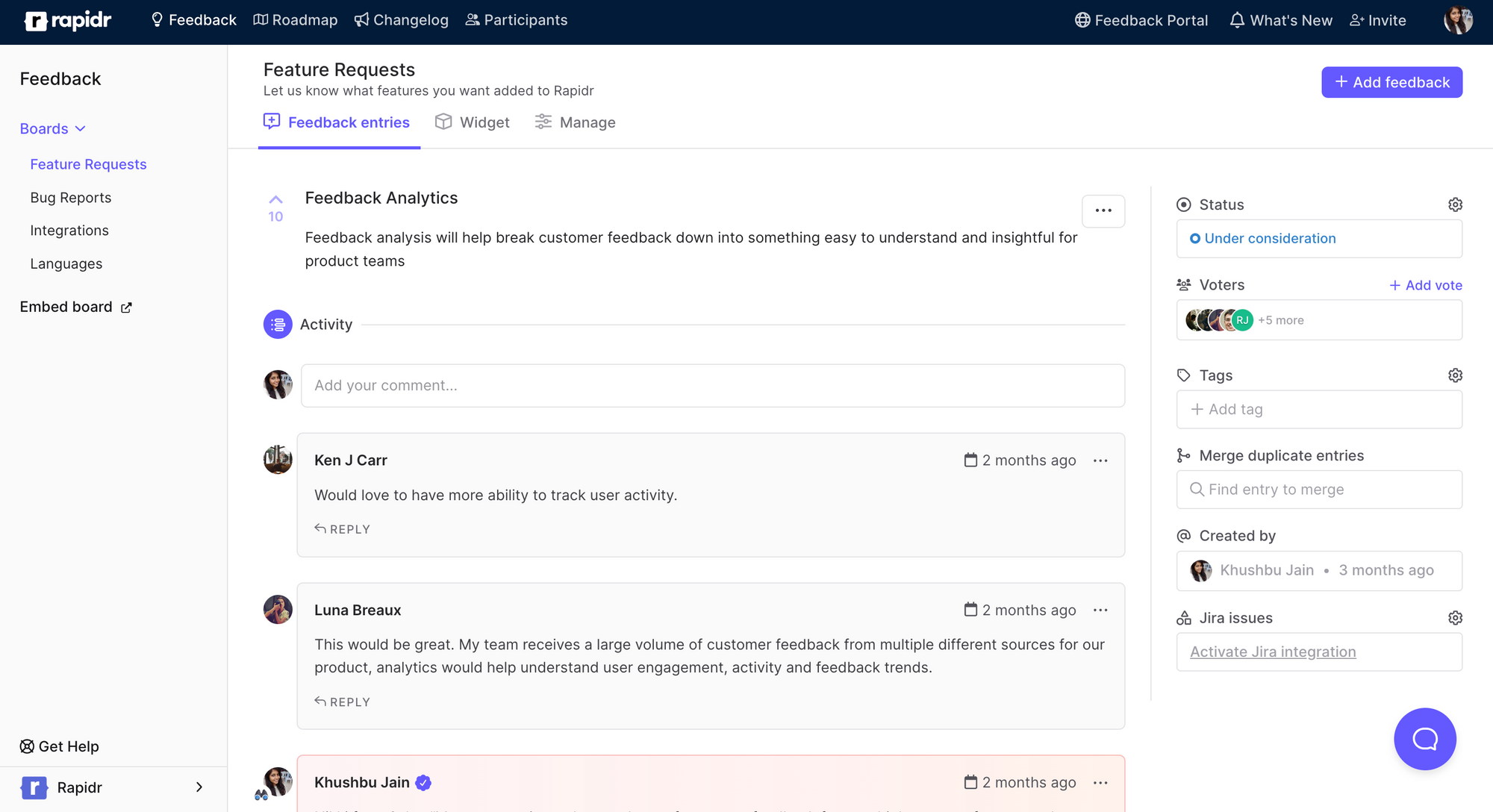
Benefits of Customer Feedback Analysis
- Product Improvement: Helps refine the product based on user experiences and needs.
- Customer Satisfaction: Enhances customer satisfaction by addressing their concerns and incorporating their suggestions.
- Business Growth: Aids in business growth by fostering customer loyalty and attracting new customers through positive word-of-mouth.
- Competitive Advantage: Provides a competitive edge by enabling the business to stay ahead regarding customer expectations and market trends.
Why Analyzing Customer Feedback is important for SaaS?
Analyzing customer feedback is vital in the SaaS industry for several reasons. Here are some of the key factors that underline its importance:
1. Product Development and Enhancement
- Feature Prioritization: Feedback helps identify the features most valued by customers and prioritize features that guide priorities for enhancements.
- Bug Identification: Customers often report bugs or issues, which can be invaluable for maintaining a high-quality product.
- Understanding Customer Needs: It helps in understanding customers' changing needs and preferences, which can fuel innovation and the development of new features.
2. Customer Retention and Loyalty
- Customer Satisfaction: Regular feedback analysis can help SaaS companies monitor customer satisfaction levels and take timely actions to prevent dissatisfaction.
According to Microsoft, 77% of customers have a more favorable view of brands that ask for and accept customer feedback.
- Building Relationships: Responding to feedback can foster stronger relationships with customers, showing that the company values their opinions and is willing to improve based on their suggestions.
- Reducing Churn: By addressing customer concerns proactively, SaaS companies can reduce customer churn, which is a critical factor in the subscription-based business model.
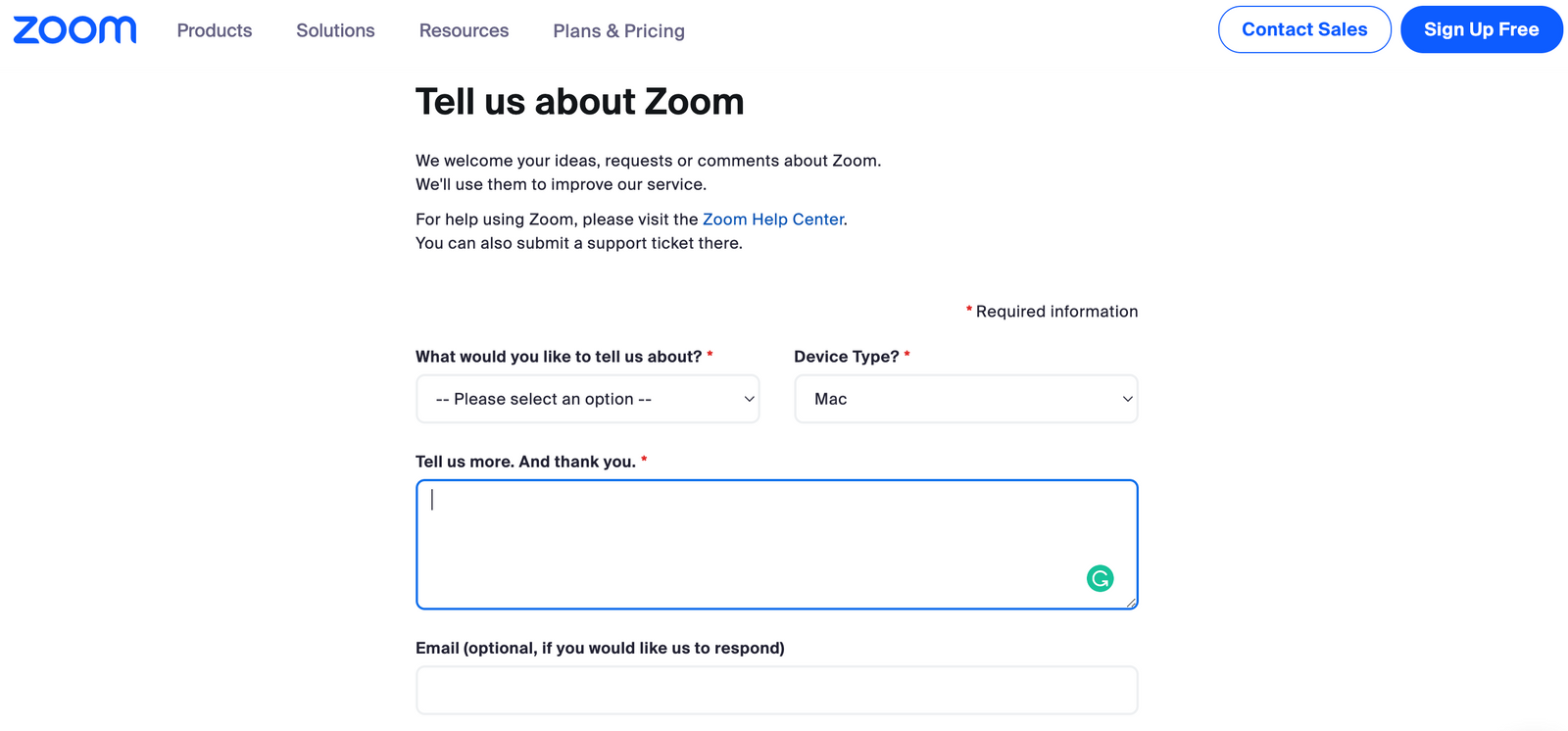
3. Business Strategy and Growth
- Market Positioning: Feedback analysis can provide insights into how the product is perceived in the market, guiding branding and positioning strategies.
- Customer-Centric Approach: It fosters a customer-centric approach, where strategies and actions are aligned with customer needs and expectations, promoting business growth.
- Competitive Advantage: Gathering and acting on customer feedback can provide a competitive advantage, helping to differentiate the product in a crowded market.
4. Resource Allocation and Priority Setting
- Resource Optimization: Feedback analysis can help identify the areas where resources (time, money, personnel) should be focused for maximum impact.
- Setting Priorities: It assists in setting priorities for product development, marketing strategies, and other business activities based on customer preferences and market demands.
5. Reputation Management
- Online Reputation: In the digital age, online reviews and feedback can significantly influence a company's reputation. By analyzing feedback, companies can manage their online reputation more effectively.
- Addressing Negative Feedback: It provides an opportunity to address negative feedback promptly and prevent potential damage to the brand's reputation.
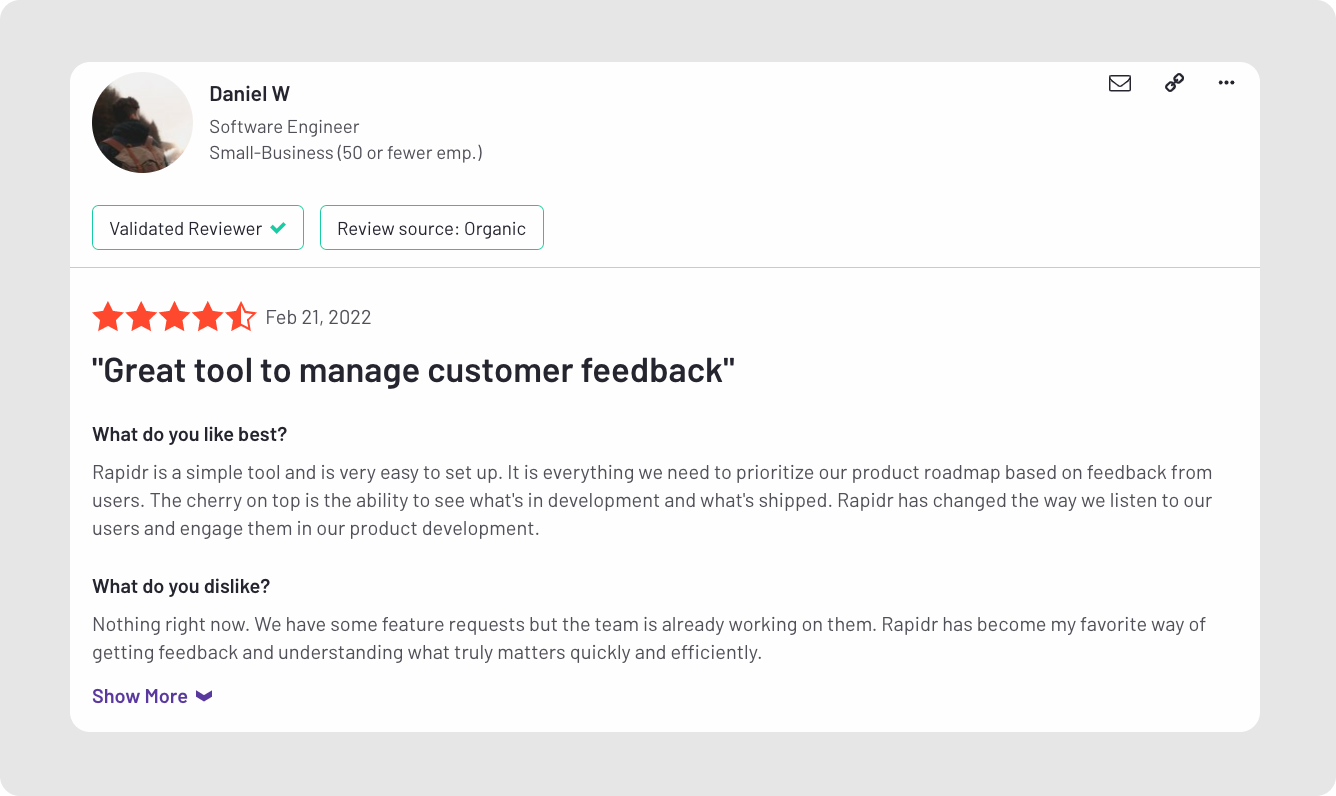
6. Insights for Marketing and Sales
- Customer Testimonials: Positive feedback can be leveraged as testimonials, and case studies in marketing campaigns and drive product sales.
- Identifying Customer Advocates: Feedback analysis can help identify satisfied customers who can become advocates for the product, assisting in word-of-mouth marketing.
In conclusion, analyzing customer feedback is a multifaceted tool that can significantly influence the success and growth of SaaS companies by aiding in product development, fostering customer loyalty, guiding business strategies, and enhancing the overall brand reputation.
Challenges of Analyzing Customer Feedback
Analyzing customer feedback is a vital process in understanding and meeting customer needs, but it comes with several challenges, including:
1. Volume of Data: Companies often receive a large amount of feedback across various channels, which can be overwhelming to analyze comprehensively. Using automated feedback tools to gather and sort feedback like Rapidr to process volume feedback and implementing data analytics techniques to process large data sets.
2. Quality of Feedback: Not all feedback is constructive. It might be vague, biased, or not actionable, making it difficult to derive valuable insights. Setting up processes to collect specific and actionable feedback and training customer service teams to solicit quality feedback during interactions.
3. Data Fragmentation: Feedback might be scattered across various platforms, such as social media, emails, customer support tickets, and review sites, making it challenging to aggregate and analyze cohesively. Integrating feedback collection tools to centralize data and integrate CRM systems to consolidate data.
4. Time Sensitivity: Customer feedback often requires timely responses, especially when addressing negative feedback or critical issues, which can be challenging to manage. Implementing real-time monitoring tools for immediate identification of critical feedback and providing swift responses to customer feedback, even if it's a no.
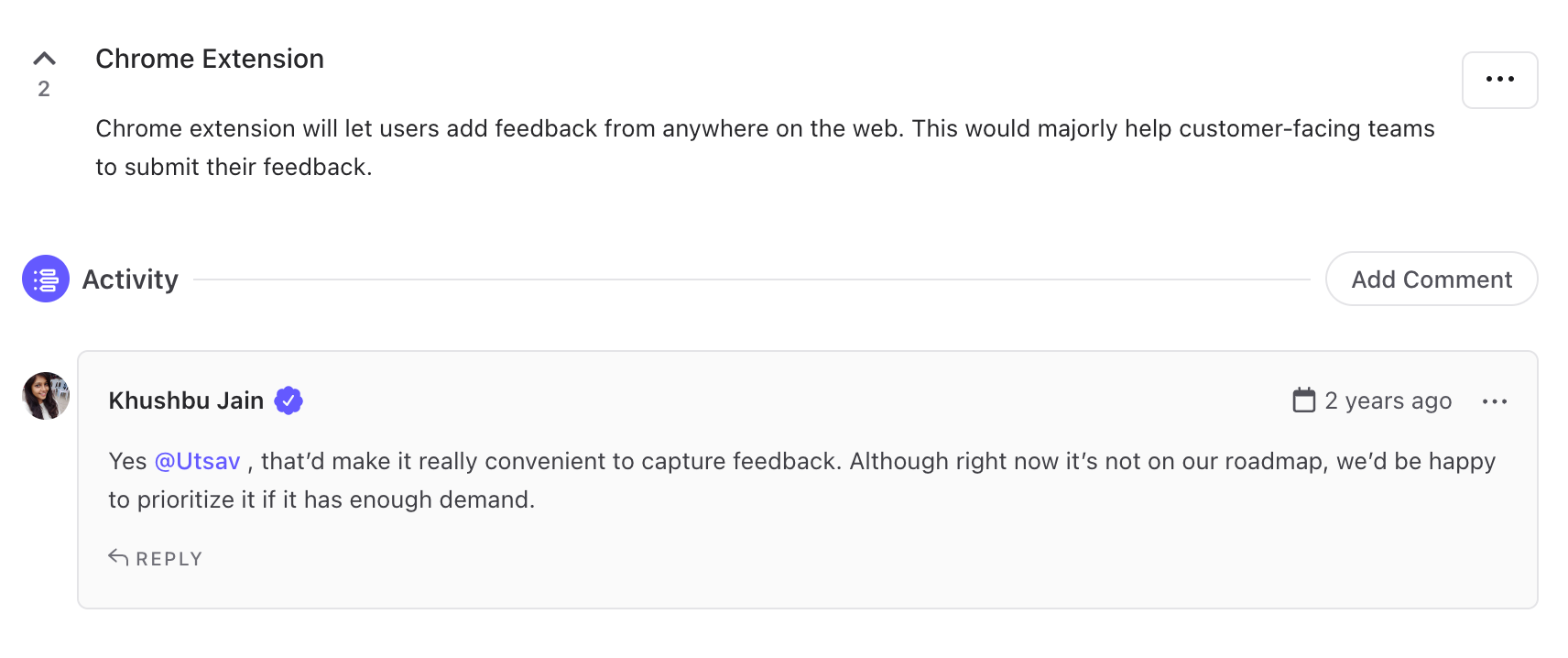
5. Integration with Business Strategy: It can be challenging to effectively integrate the insights from feedback analysis into the broader business strategy and objectives. Developing mechanisms to channel insights into strategic planning processes. Encouraging cross-functional collaboration to incorporate feedback into various business decisions to achieve product-market fit.
6. Tracking and Measuring Impact: After implementing changes based on feedback, tracking the impact of these changes can be challenging, making it difficult to assess the effectiveness of feedback analysis efforts. Setting up metrics and KPIs to measure the impact of implemented changes and increase product adoption.
How To Analyze & Act on Customer Feedback?
Analyzing and acting on customer feedback is essential in shaping a product or service that meets and exceeds customer expectations.
Implementing a robust system for analyzing and acting on customer feedback is a dynamic and ongoing process. It helps enhance products and services and builds a strong bond with customers, portraying a brand that values customer opinions and is committed to offering the best possible experience.
Here is a step-by-step guide on how to effectively analyze and act on customer feedback:
Step 1: Gathering Feedback Data in One Place
Before you can analyze feedback, you need to gather it. As a product manager, the onus is to ensure feedback collection is consistent, comprehensive, and representative of your user base.
Utilize channels such as in-app surveys, email outreach, social media listening tools, and direct user interviews. These multi-faceted approaches ensure you capture quantitative feedback (like ratings) and qualitative feedback and insights (like user comments).
Here are various channels to collect feedback:
- Feedback surveys
- Customer feedback portals
- Feedback forms
- In-app feedback widgets
- User interviews
- Emails
- Usability Tests
- NPS surveys
- Customer support tickets
- Social media mentions
- Customer advisory boards
Feedback Surveys
Surveys are a classic way of getting customer feedback. You can send surveys to your customers via email or even pop them up in your product. Use a combination of multiple-choice and open-ended customer feedback questions for comprehensive feedback. Tools like SurveyMonkey, Google Forms, or Typeform can help you create and distribute these.

Customer Feedback Portals
Create a centralized place for product feedback to keep track of different types of customer feedback and improve SaaS products while listening to their customers. This is possible with Rapidr.
Rapidr helps SaaS companies be more customer-centric by consolidating feedback across different apps, prioritizing requests, having a discourse with customers, and closing the feedback loop.
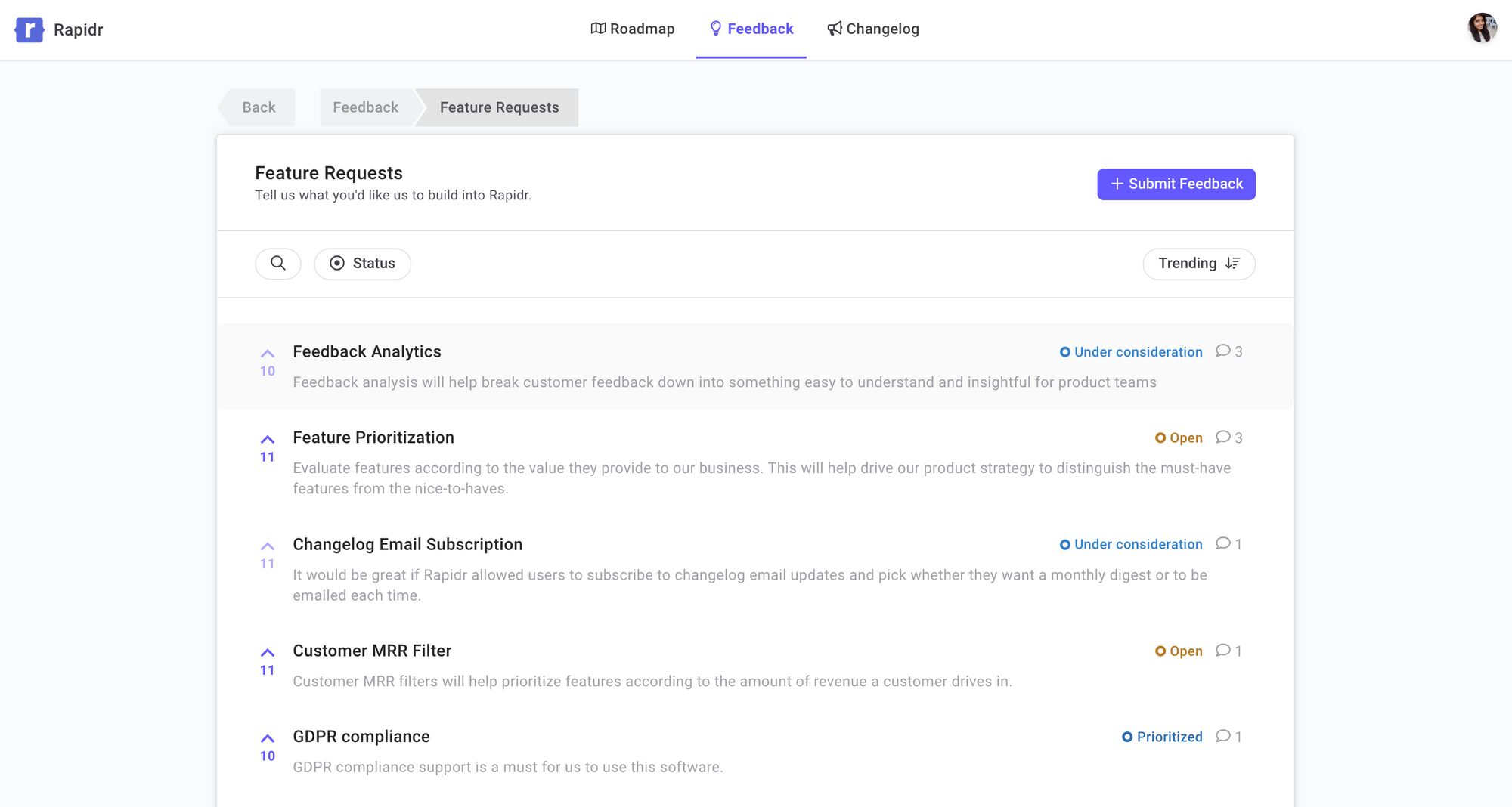
Feedback Forms
Integrate feedback forms directly within your software with feedback management systems. After certain actions or on particular screens, prompt users to provide feedback. Make sure these forms are not intrusive to the user experience.
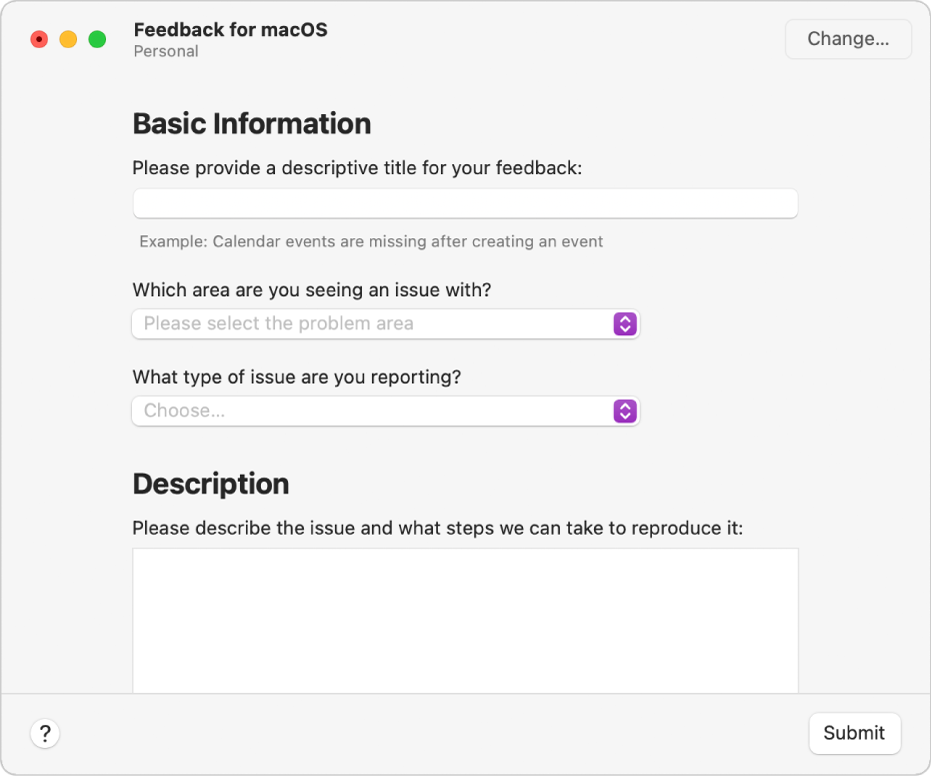
In-app Feedback
Utilize in-app feedback platforms to ask users about their experiences in real-time. This can be done through chatbots or pop-up messages, prompting immediate feedback while the user is engaged with the product.
Rapidr's deep Intercom Integration makes it easy for your product and customer success teams to track incoming feedback on Intercom.

Email Feedback
Personalized emails can be an effective way to gather feedback. The approach can range from casual (e.g., "We noticed you've been using our product for a while and would love to hear your thoughts") to more formal, depending on your relationship with the customer.
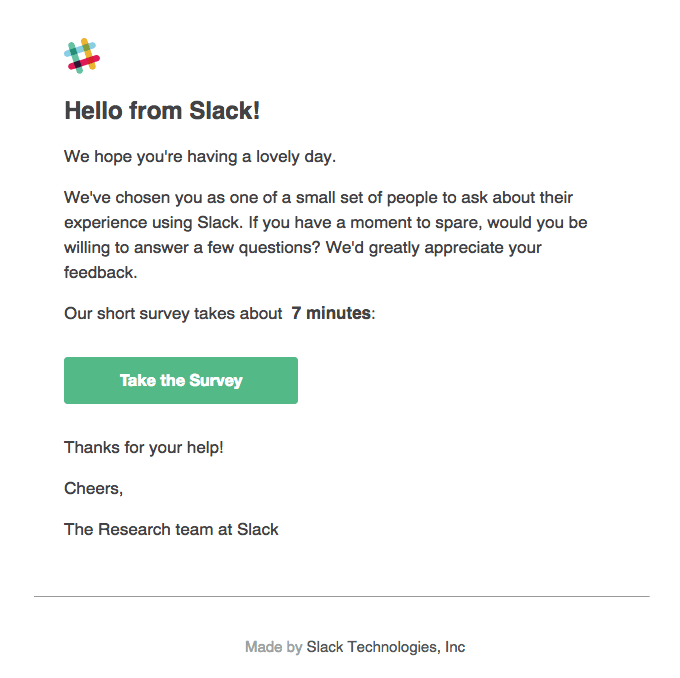
User Interviews
Conducting one-on-one user interviews can be invaluable if your complex SaaS product needs in-depth insights. They allow you to understand your customers' needs, pain points, and overall experience with your product.
Usability Tests
Collect beta testing feedback by asking a group of customers to test new features of your product. You can do this through various platforms by organizing beta-testing groups among your customers. In research from Zendesk, 50% of customers said they would switch to a competitor after a bad experience.
Using a beta testing feedback platform like Rapidr will help you monitor for complaints, bugs, and negative feedback circulating and allow you to resolve it quickly, with its various features to close the feedback loop.

Social Media & Online Forums
Monitor your company's social media profiles and any online community feedback forums where your product might be discussed. You can gather feedback from these discussions or even ask questions directly.
Net Promoter Score (NPS)
An NPS survey consists of a single question: "On a scale of 0-10, how likely are you to recommend our product to a friend or colleague?" It's a simple way to gauge customer satisfaction and loyalty.
Customer Support Feedback
Your customer support team often interacts directly with customers, hearing their pain points and praises first-hand. Ensure an internal team feedback system is set up for this valuable information to be collected from customer-facing teams and shared with the product team.
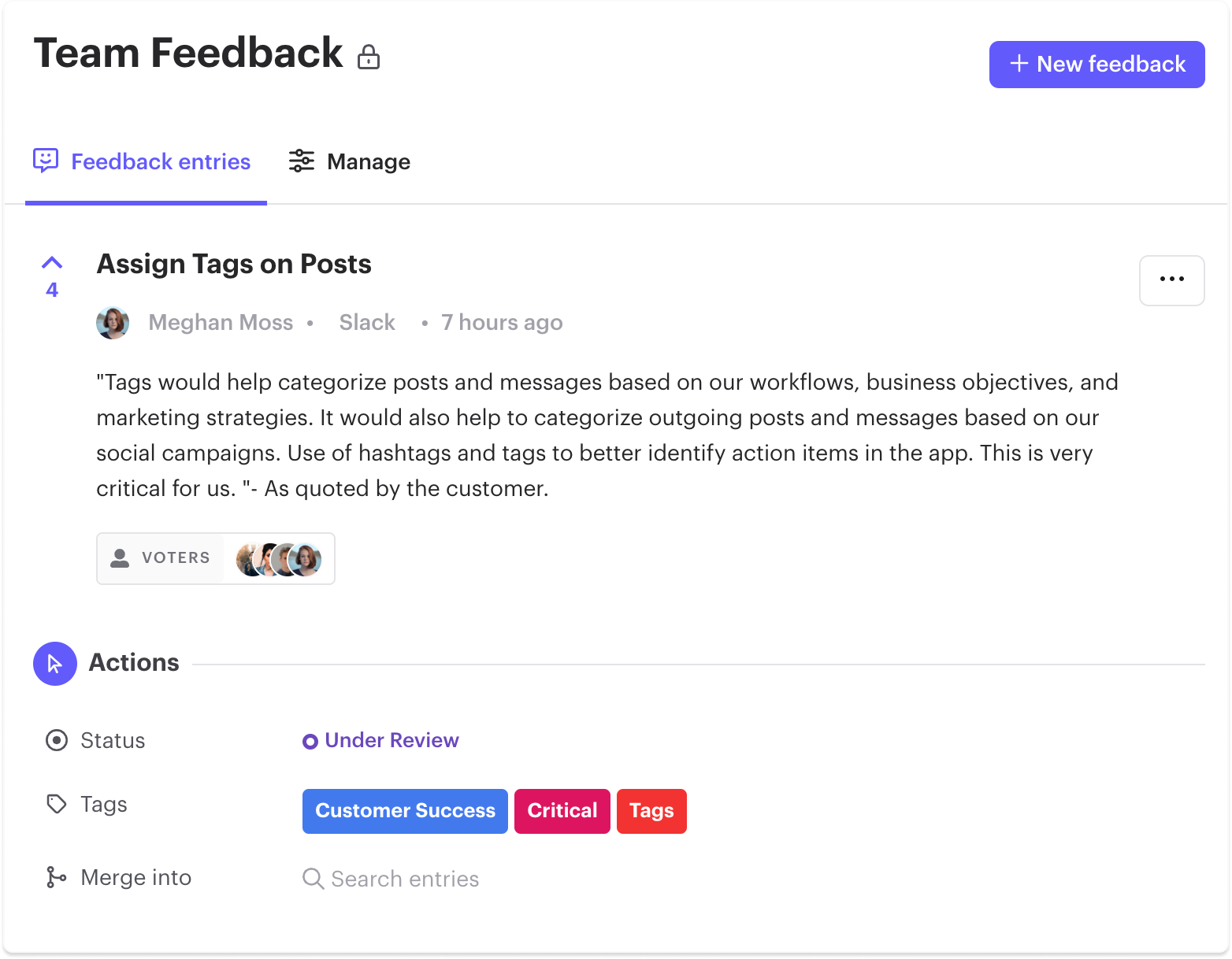
Customer Advisory Board
Establishing a customer advisory board can be a great way to receive regular feedback from a dedicated group of customers. They can provide insight into your product roadmap, new feature ideas, and their overall experience.
Remember, when asking for feedback, be open and receptive to the responses. Positive feedback is great, but negative feedback is where you can learn and grow. After gathering feedback, the next step is to analyze the data, draw insights, and then iterate your product based on the feedback.
Step 2: Organizing and Categorizing Feedback
Create Categories of Feedback
Once feedback is in hand, the next step is categorizing and prioritizing it. Break feedback into themes or categories based on themes or topics to facilitate easier analysis. This helps identify which areas require immediate attention and which can be slated for future consideration.
Different categories and types of feedback include:
- Product Feedback
- Feature Requests
- Bug Reports
- Customer Reviews & In-app Ratings
- Complaints & Questions
- Praise & Appreciation Posts
- Sales Objections & Feedback
- Customer Churn Feedback
Additionally, it's essential to prioritize feedback based on its potential impact. Consider factors like how many users have reported a particular issue or how crucial a feature request is to the core functionality of your product based on user segmentation. This process ensures you're addressing the most pressing concerns driving revenue impact.
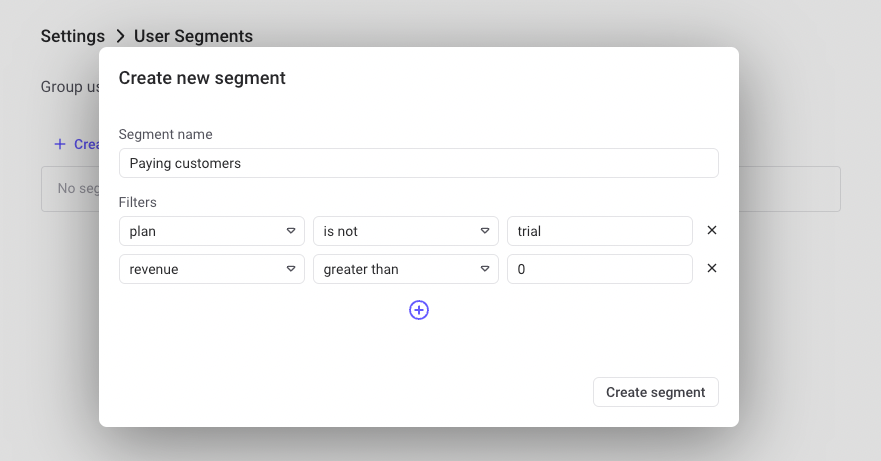
Identify Trends & Patterns
Feedback is most valuable when viewed as part of a larger pattern or trend. Rather than addressing individual comments in isolation, look for recurring themes or sentiments among your user base. Look for patterns and trends in the feedback to identify areas that need attention and improvement.
By identifying trends, you can better predict future challenges or opportunities, allowing for proactive product development. This foresight is invaluable in maintaining a competitive edge in the ever-evolving SaaS market. Here are some techniques that can help you identify patterns effectively:
1. Thematic Analysis: Analyzing feedback to identify common themes or recurring topics in customer comments. This method helps in pinpointing specific areas that need attention.
2. Sentiment Analysis: Using sentiment analysis tools to gauge the overall mood or sentiment from the feedback. It helps understand whether the general perception is positive, negative, or neutral.
3. Text Analytics: Utilizing text analytics to analyze open-ended comments and reviews. This technique can help identify common keywords or phrases that indicate particular trends or issues.
Step 3: Analyzing Feedback
Qualitative Analysis
Qualitative analysis of customer feedback involves deeply exploring customers' non-numerical data, such as comments, reviews, or interview responses.
Conduct qualitative analysis to understand the nuances of customer experiences and opinions. This analysis seeks to understand the underlying reasons, opinions, and motivations behind customer feedback.
Qualitative customer feedback analysis provides a rich, nuanced understanding of customer opinions and experiences. By delving deep into customer narratives, emotions, and motivations, businesses can uncover valuable insights that drive meaningful improvements and foster stronger customer relationships. It's a vital tool for building a customer-centric business that resonates with its audience at a deeper level.
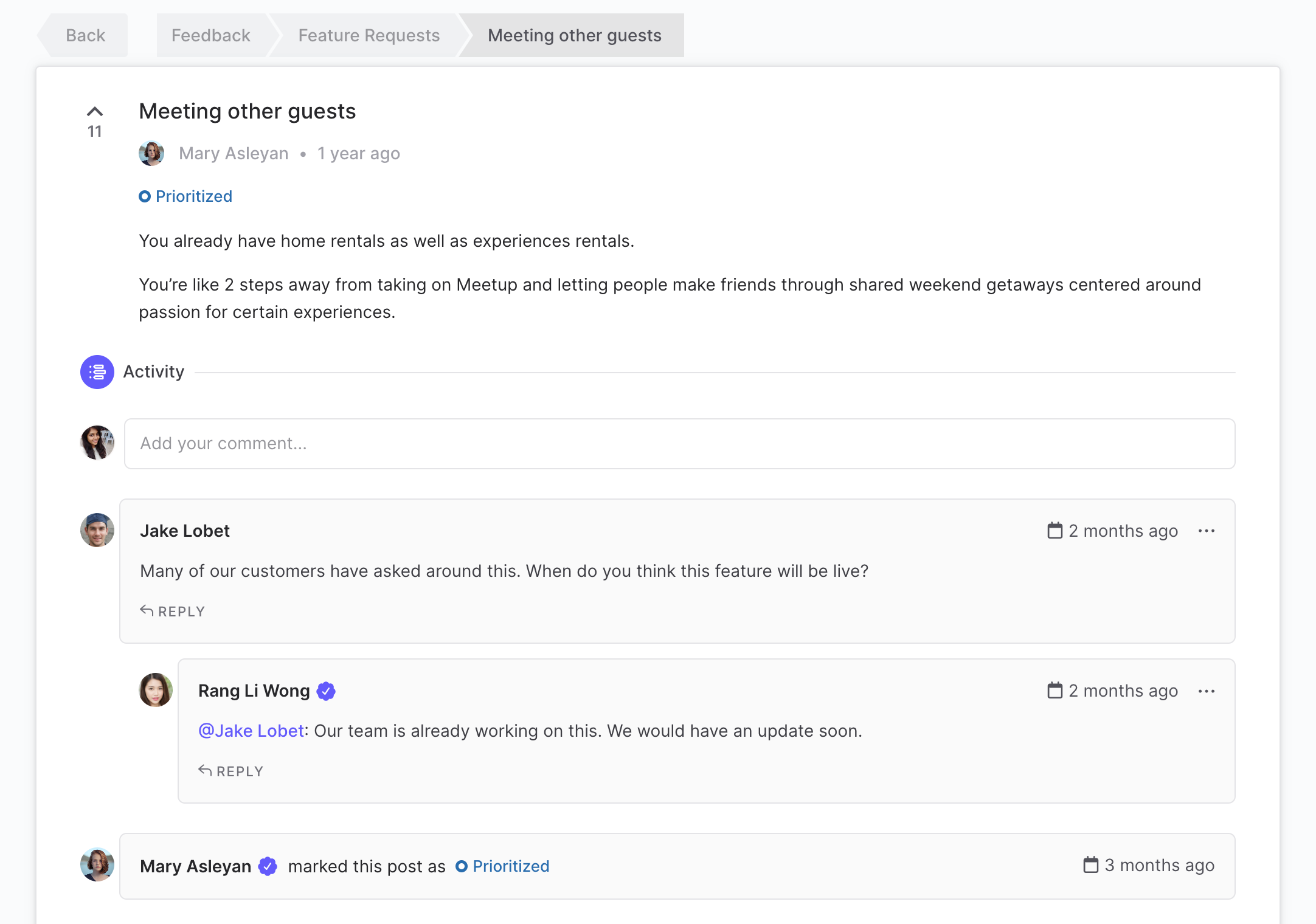
Quantitative Analysis
Quantitative analysis of customer feedback refers to evaluating numerical data obtained from customer reviews, ratings, or structured survey responses.
Use quantitative analysis to identify statistically significant patterns and trends in customer feedback. This approach allows businesses to objectively measure and analyze customer experiences, helping identify trends, measure satisfaction levels, and make informed decisions based on statistical data.
Combined with qualitative analysis, this analytical method offers a holistic view of customer feedback, empowering businesses to build products and services that truly resonate with their audience. The ultimate aim is to use the insights gathered to inform strategies and actions that foster customer-centric growth.
Step 4: Drawing Insights & Implementing Changes
Draw out key insights from the analysis that can inform strategies and decision-making. Based on the insights gained, prioritize actions significantly impacting customer satisfaction and business growth.
Making Data-Driven Decisions
Finally, the goal of feedback analysis isn't just understanding; it's action. Use the insights gleaned from feedback to inform your product development roadmap. This data-driven approach ensures you make decisions aligned with user needs and desires rather than relying on assumptions or gut feelings.
Create a detailed action plan outlining the steps to implement changes based on the feedback analysis. Involve all relevant stakeholders in the implementation process to ensure coordinated efforts and successful outcomes with public roadmaps.
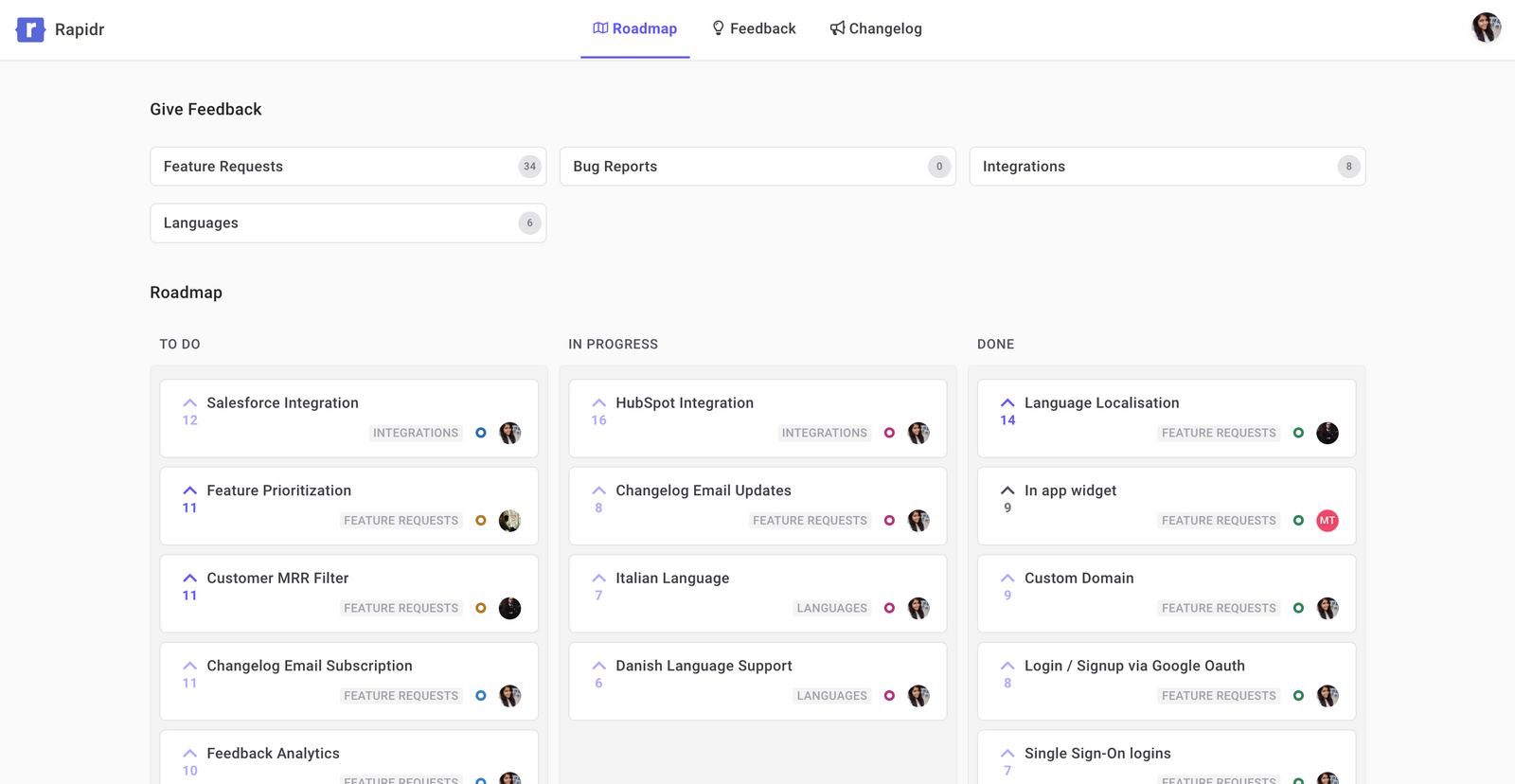
Monitoring and Adjusting
Closely monitor the outcomes of the implemented changes to assess their effectiveness. Based on the monitoring, make necessary adjustments to refine the changes and optimize results.
Step 5: Communicating with Customers
Keep customers informed about the changes based on feedback to build trust and foster loyalty with a product changelog. Encourage customers to continue providing feedback to create a cycle of continuous improvement.
Share your findings with team members, executives, and other stakeholders to drive decision-making. When you release new features or updates, reach out to users to see how they find them. Ensure that every product team member, from designers to developers to marketers, understands the changes and their rationale.
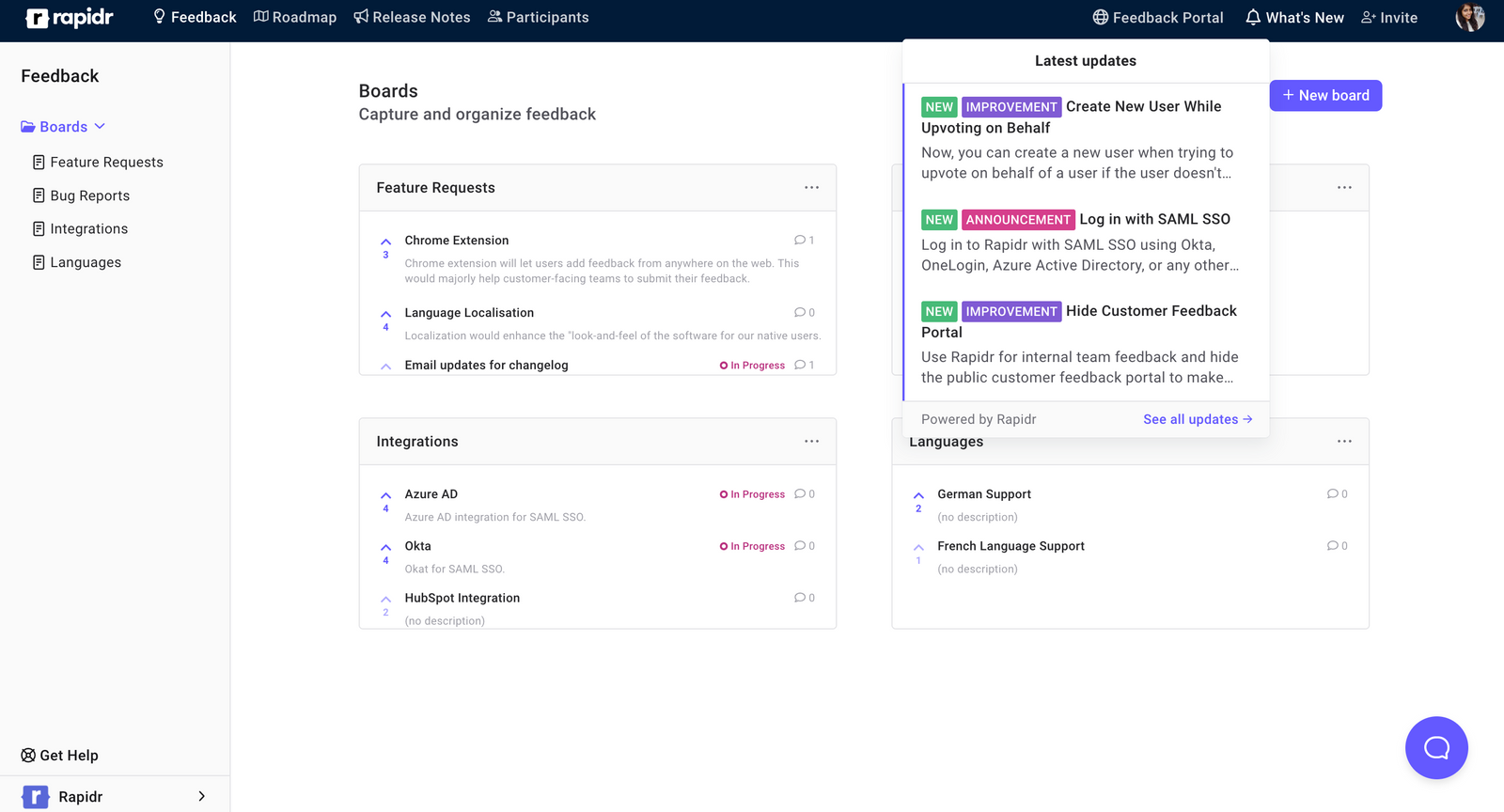
Best Tools for Customer Feedback Analysis
Some popular tools commonly utilized for customer feedback analysis:
- Feedback Survey Tools: Platforms like SurveyMonkey, Qualtrics, and Medallia for creating and analyzing customer surveys.
- Customer Support & CRM tools: Software like Zendesk and HubSpot to gather and analyze feedback from emails, support tickets, chat, and social media.
- Text Analytics Platforms: Tools like Lexalytics and MonkeyLearn can analyze text data to extract valuable insights from customer feedback.
- Social Media Listening Tools: Platforms like Hootsuite and Brandwatch allow businesses to monitor and analyze customer feedback on social media.
- Feedback Management Tools: Platforms like Rapidr and UserVoice help businesses collect and analyze feedback to make informed product decisions.
- Website Analytics & Heatmaps Tools: Tools like Google Analytics and Hotjar to understand and analyze website user behavior.
Automate Customer Feedback Analysis with Rapidr
Product managers can make data-driven decisions that resonate with their user base by analyzing feedback, categorizing it, and identifying key trends. The iterative process of implementing feedback, tracking the results, and adjusting accordingly ensures that products evolve in tandem with customer needs and desires.
Rapidr helps product teams understand what customers need by tracking feature requests and ideas, analyzing customer feedback & prioritizing what to build next, creating a roadmap backed by customer insights, and communicating new features with changelog.
Rapidr helps teams capture product ideas, requests, and feedback from colleagues and customers with their customer feedback portal and in-app widget. Next, analyze and prioritize features with the roadmap based on customer insights. Lastly, let customers know what's new with release notes.
While there are many customer feedback tools to help you capture, organize, and prioritize feedback, consider the one that enables you to uncover the insights from the feedback and shape your product research.
Incorporate customer feedback into your product development and automate customer feedback analysis with Rapidr.
- Set up a customer feedback system.
- Collect actionable feedback from customers and teammates with feedback portals and in-app feedback widgets.
- Analyze, prioritize, and categorize ideas and feedback to make sense of them.
- Act and create a product development plan with a roadmap.
- Announce new features and product updates to close the feedback loop.
With Rapidr, you can collect, analyze, and organize feedback and engage with customers as their feedback moves through the development process. Sign up for free and set up a complete customer feedback system to inform and enhance your SaaS customer journey.

